Art World
Why Is Modigliani Catnip for Forgers? The Fakes (and Feuds) Behind One of the Art Market’s Most Dangerous Artists
After a high-profile bust in Italy, experts are working overtime to tackle the problem.

After a high-profile bust in Italy, experts are working overtime to tackle the problem.

by
Lorena Muñoz-Alonso

An exhibition of work by Amedeo Modigliani in Genoa ended dramatically last month, when 21 paintings—around a third of the works in the show—were seized from the Palazzo Ducale by Italian police on suspicion they were fake.
The museum closed the show three days early—but not before a staggering 100,000 visitors had already seen it.
To most observers, the incident was shocking. But for Modigliani scholars, it was not surprising. The Italian painter and sculptor, renowned for his long-faced portraits and tragic life, is one of the world’s most frequently faked blue-chip artists. In fact, inauthentic versions of his work have been plaguing the art market for decades.
As museums around the globe, including the Tate Modern in London and the Jewish Museum in New York, prepare to open major exhibitions of Modigliani’s work this fall, scholars are busily developing new scientific analysis and research to help distinguish the real from the fake. But the road has not been easy.
Experts offer several explanations for why Modigliani is so beloved by forgers. The first is financial. As one of the few artists whose work has crossed the $100 million threshold at auction (according to the artnet Price Database, his painting Nu couché (1917–18) fetched $170.4 million at Christie’s in 2015), Modigliani is worth a forger’s time and effort to imitate.
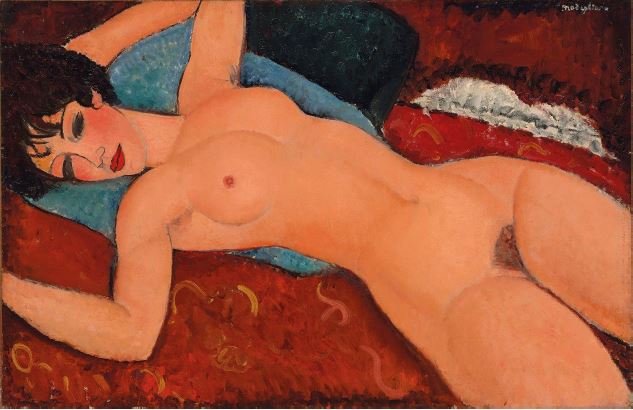
Amedeo Modigliani, Nu couché (1917–18). Courtesy Christie’s New York.
“Even if Modigliani died poor, his paintings were highly appreciated already in the 1920s, right after his death, so there’s been fakes from very early on,” says Jeanne-Bathilde Lacourt, a Modigliani expert and curator at the Lille Métropole Museum of Modern, Contemporary, and Outsider Art (LaM).
Furthermore, Modigliani’s paintings, whose spare forms are inspired by Cycladic art, “seem somehow simple to make,” Lancourt says. “Of course…they are much harder to fake than what you’d think, and many fakes are in fact incredibly obvious.”
A third issue: poor record-keeping. When Modigliani was alive, his works were rarely reproduced in catalogues or in print. And when he died at age 35, he had no gallerist committed to looking after his legacy and his daughter was just a baby.
“There was no one there to make sure that his works were documented and cataloged for quite a long time,” Lancourt notes. “Nobody did proper research of his works until after the Second World War, so that’s pretty much 30 years”—ample time for forgers to start producing fakes.
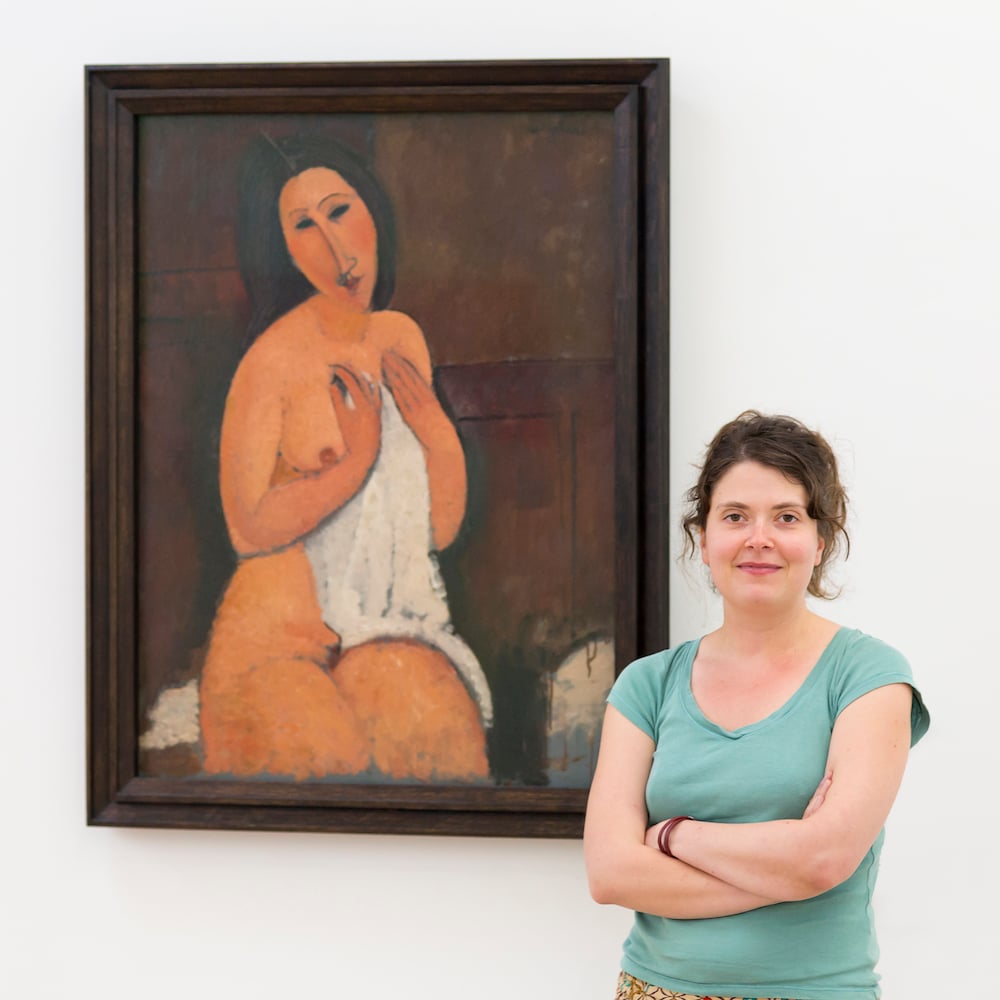
Jeanne-Bathilde Lacourt, curator in charge of Modern Art at the LaM – Lille Métropole Musée d’art moderne, d’art contemporain et d’art brut, Villeneuve d’Ascq (France). In the background: Amedeo Modigliani, Seated Nude with a shirt (1917). Donation of Geneviève et Jean Masurel. LaM, Villeneuve d’Ascq. Photo Nicolas Dewitte / LaM.
Perhaps the most pressing problem with Modigliani authentication, however, rests with scholars. Experts have developed competing, and sometimes contradictory, catalogues raisonnés (a comprehensive list of an artist’s known works). While most artists only have one catalogue raisonné, Modigliani has six. One scholar has reportedly received death threats over his plans to release yet another next year.
The most widely accepted catalogue was assembled by Ambrogio Ceroni, an Italian appraiser and critic. First published in 1958 and last updated just before his death in 1970, it features 337 works and is regarded as the gold standard by auction houses and museums.
But many experts insist Ceroni was too conservative and that his list is incomplete. (A French dealer told ARTnews in 2004: “I could find a Modigliani in an attic tomorrow, with a letter from Modigliani attached to it, and people would still hesitate.”)
Other catalogues have received even more serious criticism. As a recent Vanity Fair article noted, another scholar, Christian Parisot, claims that the artist’s daughter gave him the official Archives Légales Amedeo Modigliani as well as the right, under French law, to authenticate Modigliani’s work. But Parisot’s reputation took a dive in 2010, when he received a two-year suspended sentence after being convicted of fraud by a French court for falsely authenticating 77 drawings and watercolors by Modigliani’s mistress Jeanne Hébuterne.
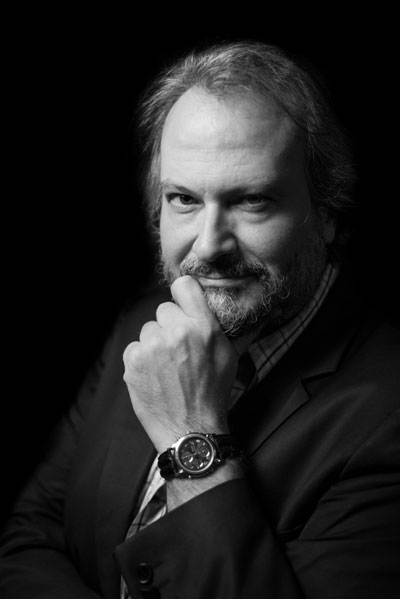
The Modigliani expert Marc Restellini. Courtesy Marc Restellini.
The landscape will change even further in the next 18 months, when scholar Marc Restellini publishes his Modigliani catalogue, which has been almost two decades in the making. Restellini tells artnet News that it will feature a total of 415 works—78 more works than Ceroni’s.
It’s unclear how much of an impact Restellini’s catalogue will have on the Modigliani field. Museums and auction houses remain hesitant to stake their reputations on a work not included in the Ceroni catalogue. A Tate spokesperson told artnet News that the museum was only borrowing works recognized by Ceroni for its show in November, which will be the most comprehensive Modigliani exhibition ever held in the UK.
Restellini says the biggest obstacle to completing his catalogue “is the suspicion and ignorance of some market operators…still thinking that a repertoire like Ceroni is the alpha and omega of Modigliani today.”
He continues: “They refuse authentic works whose pedigree is solid on the absurd pretext that the work is not in the Ceroni catalogue. Ceroni himself indicated…that his work was incomplete and that it would have to be continued.” Indeed, while the sudden influx of “new” Modiglianis would be great news for their owners, those who have works in the Ceroni catalogue might fear the value of their paintings could decline as a result.
“We have never seen such an absurd situation, which also fosters a considerable prejudice against the holders of a hundred works which we can’t do anything with, because of the commercial dictates of the two giants of public sale,” Resellini says, referring to Christie’s and Sotheby’s.
(Spokespeople from both auction houses told artnet News that Ceroni is an important part of their research process, but that specialists also conduct their own independent evaluation when examining a work by Modigliani.)
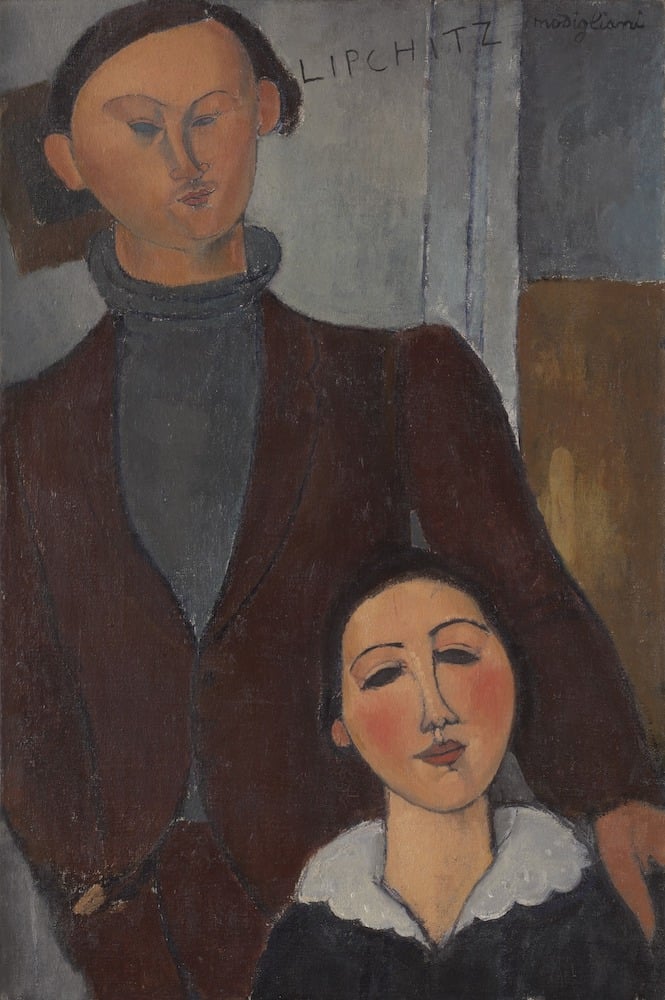
Amedeo Modigliani, Jacques and Berthe Lipchitz (1916). Courtesy the Art Institute of Chicago.
Asked about his earlier statements that he had received death threats for declining to include certain works in his catalogue, Restellini declined to go into detail, but says that solving the Genoa case “will put off those who were at one moment threatening my life, who were never private collectors.”
Old-fashioned scholarship is not the only avenue experts are pursuing to solve Modigliani’s forgery problem. Early next year, a prestigious group of curators and conservators will begin studying 27 paintings and three sculptures by the artist that belong to the French state. Using forensic analysis, they hope to learn more about Modigliani’s techniques and process, making it easier to identify fakes.
“Of course we might find suspicious items, but we expect most of them to be genuine because they are well documented works,” says Jeanne-Bathilde Lacourt, who will be participating in the study alongside experts from the Centre de Recherche et de Restauration des Musees de France and the University of Lille 1.
A similar study was conducted in 1981 ahead of a major Modigliani exhibition in Paris. (One painting was found to be fake at the time, Lacourt says.) Since then, experts have developed an array of advanced techniques that didn’t exist at the time, such as x-ray and infrared imaging, which can reveal how an artist developed his or her compositions.
The team will also study the molecular makeup of organic samples taken directly from Modigliani’s work. This information will help rule out oil paints, canvas threads, stones, and pigments that were not typical of the artist or not available during his lifetime.
“Some paintings are visibly fakes—you can tell by the technique, by the gesture, by the brushstroke,” Lacourt says. “But it’s not always that easy…which is why molecular analysis is so key. No approach can be the only one, they are all important.”
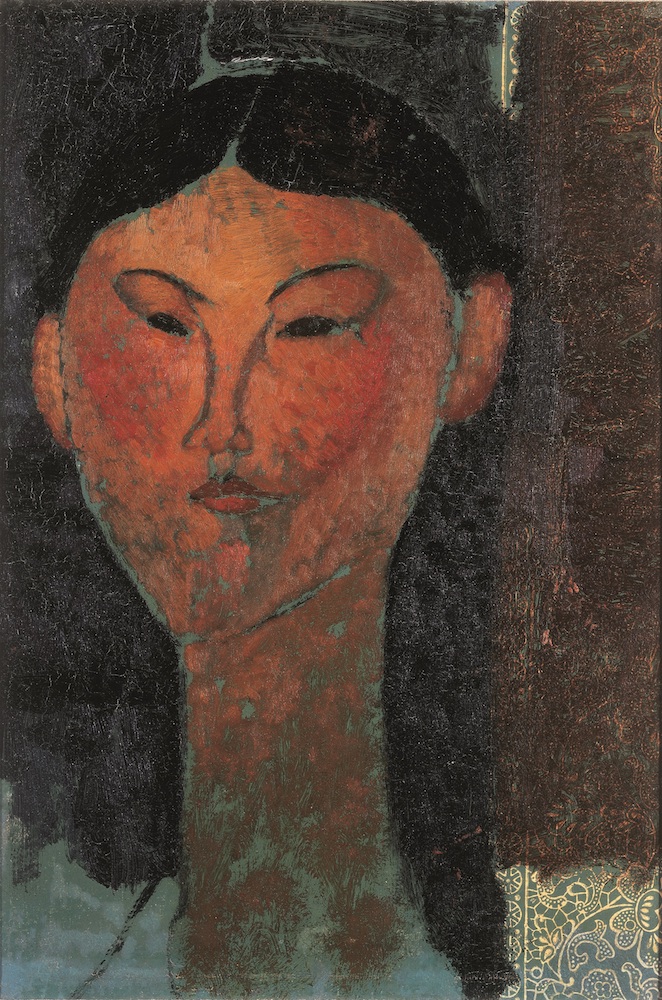
Amedeo Modigliani, Beatrice Hastings (1915). Private Collection, Switzerland, courtesy Tate.
Restellini has proposed one other dramatic way to curb the stream of fakes: To destroy them as soon as they are identified. “I was wrong in previous cases not to ask for the destruction of works,” he says.
“The Genoa affair has now made me change my strategy. To see false works that we hunted down, works that we thought had disappeared because we sent the forger to prison, reappearing after 10 years, is really painful. Now I ask for the destruction of the forgeries…I will do so whenever I see a false work exhibited to the public.”